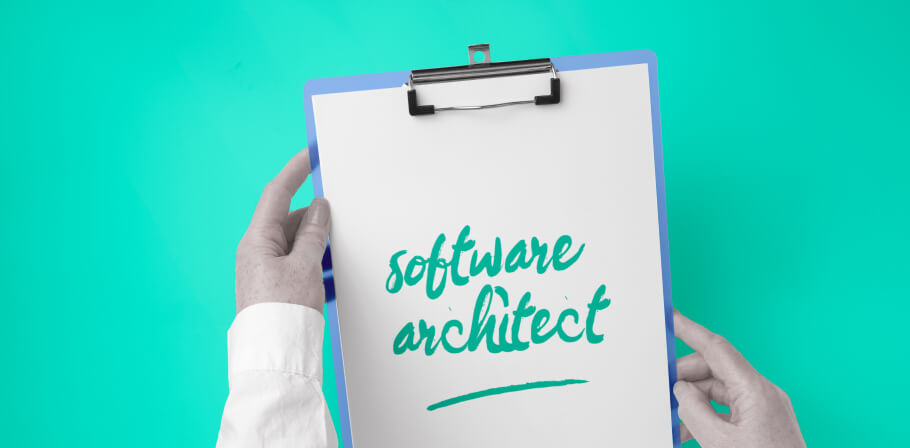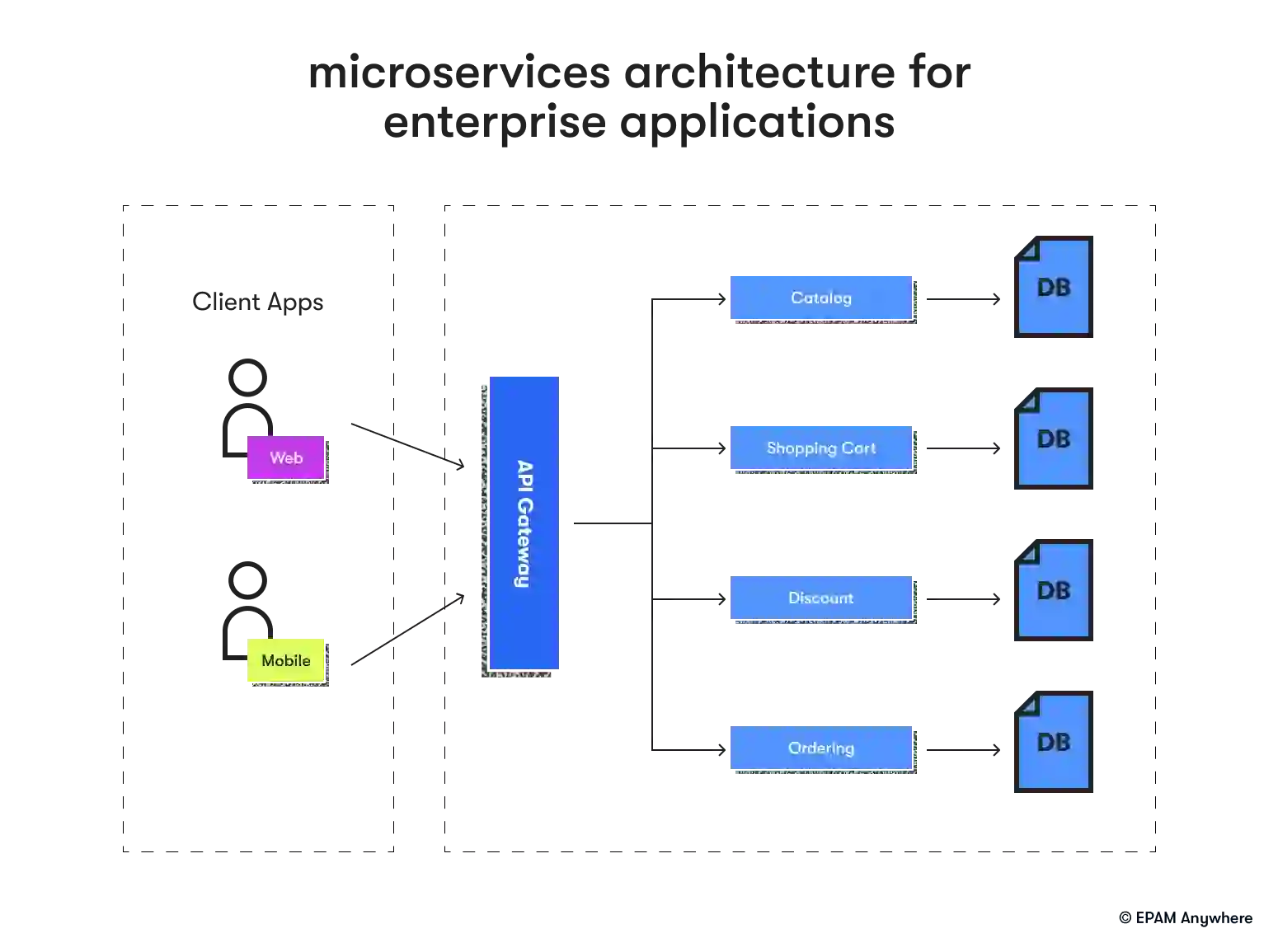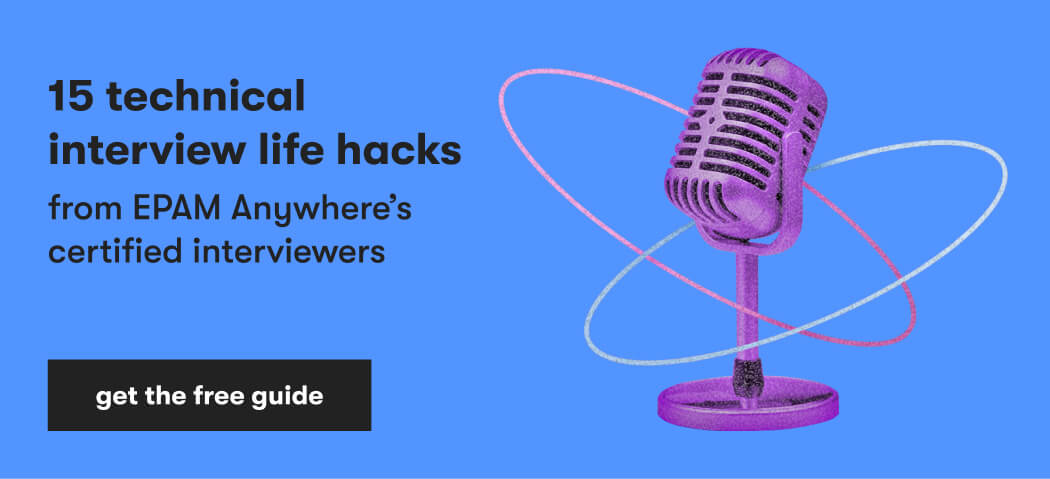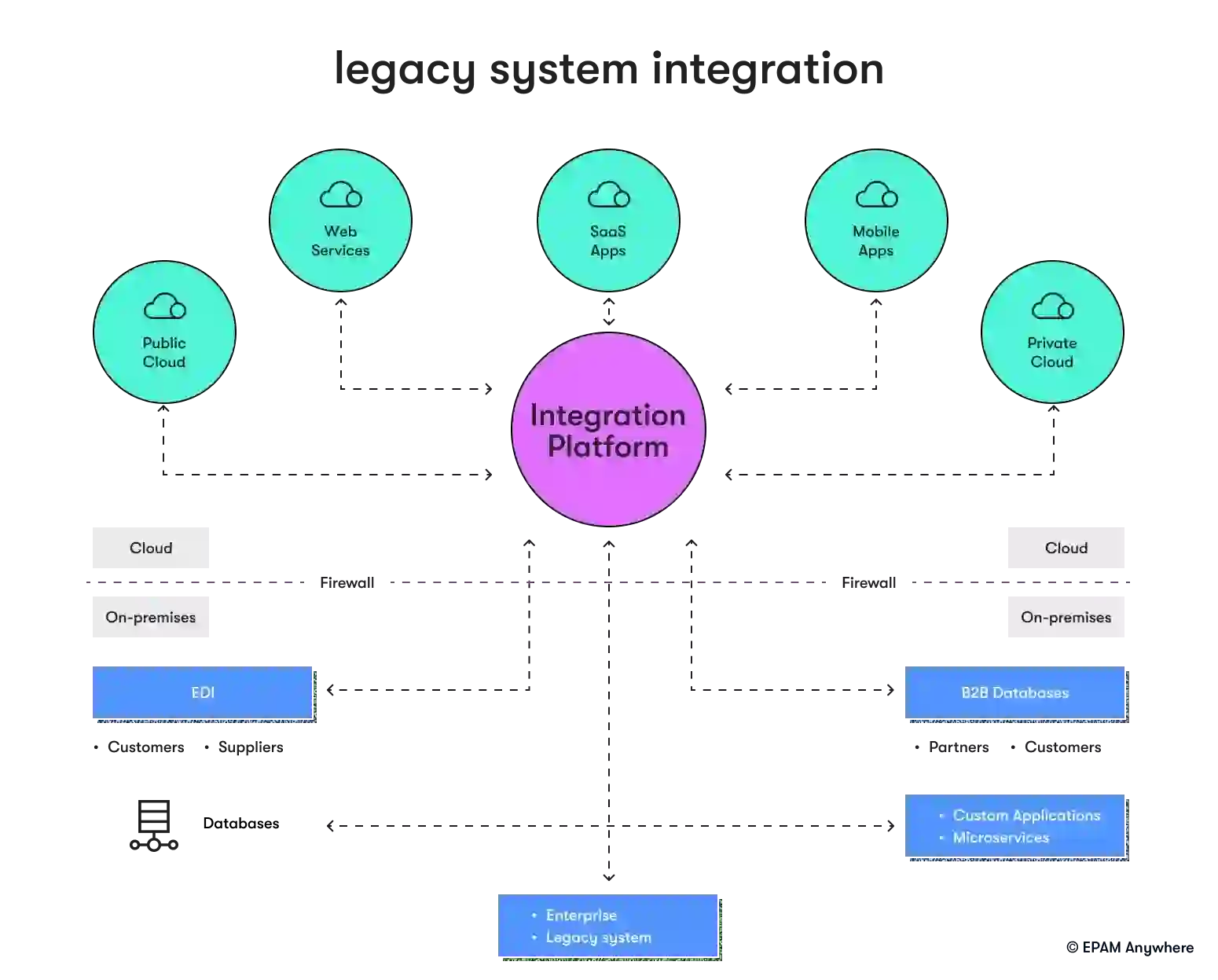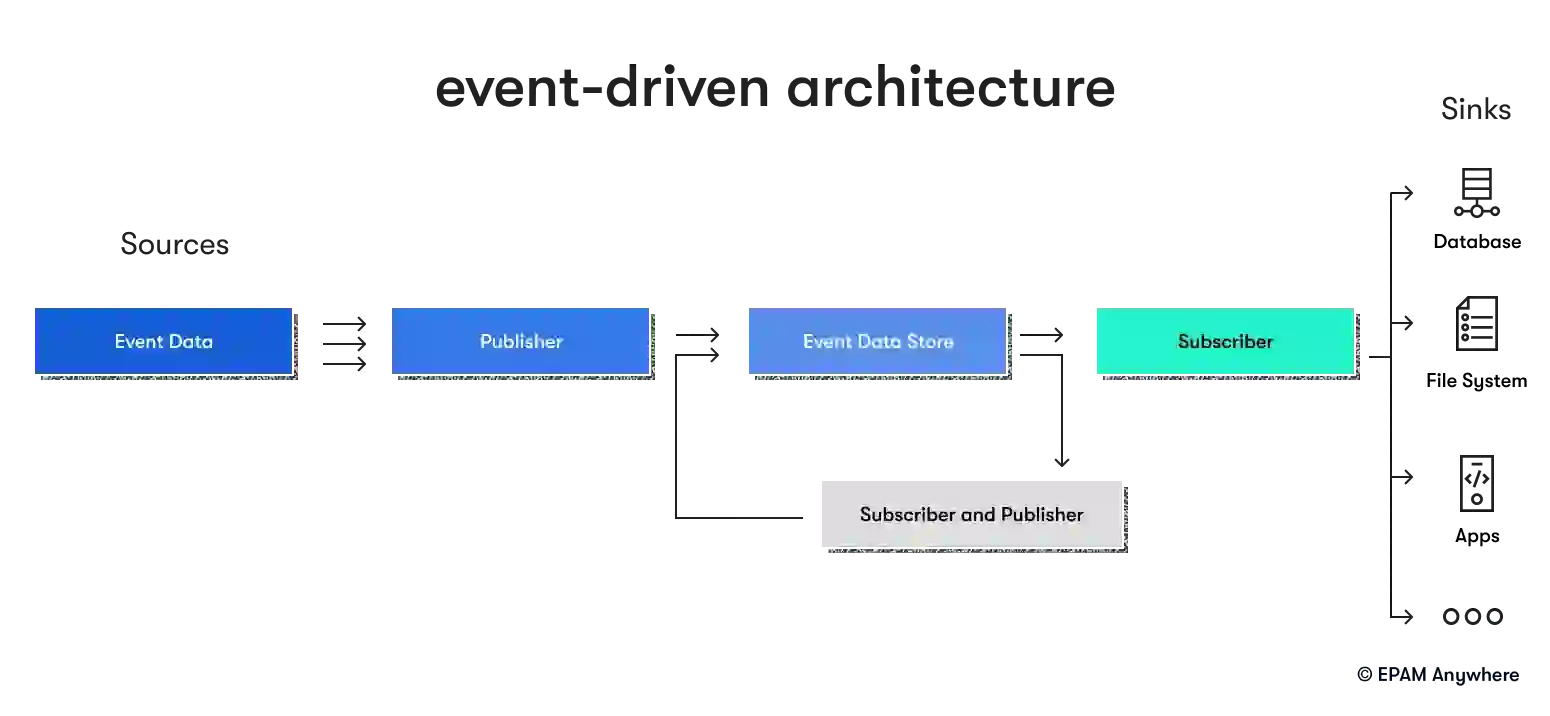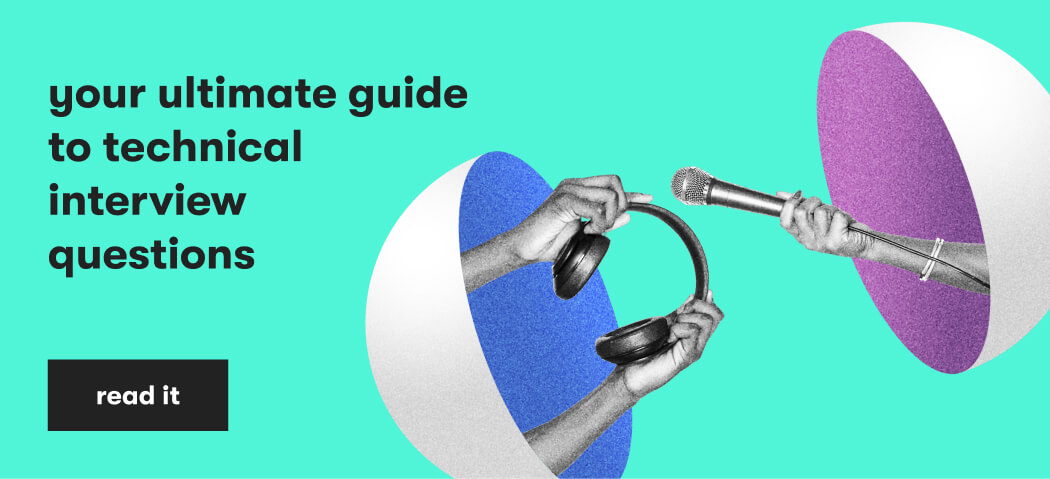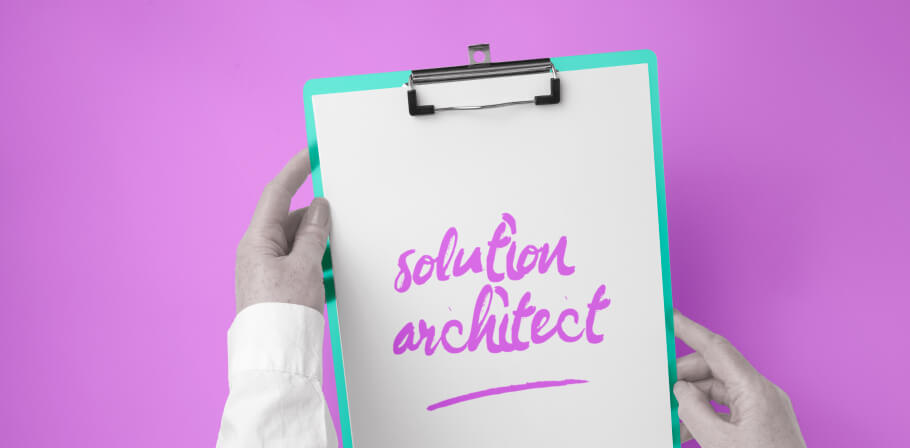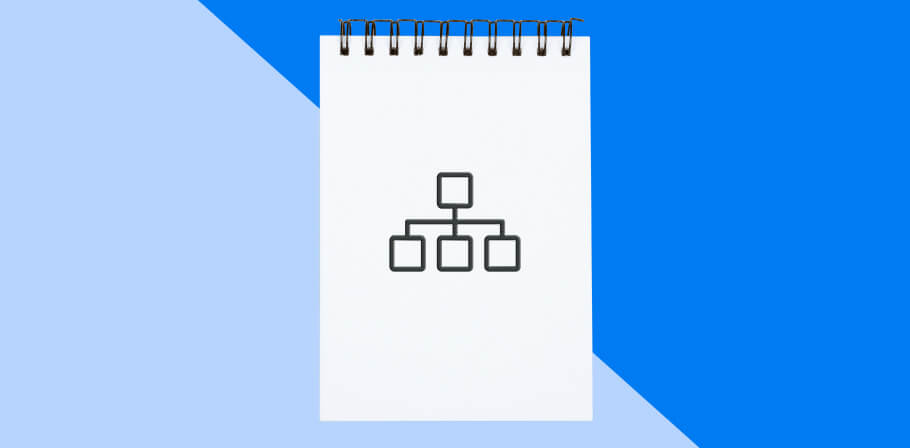This article has been reviewed and verified by Robert Mazan, Chief Software Engineer (Solution Architect) at EPAM Anywhere. Thank you, Robert!
Preparing for a solution architect interview? Your journey to success begins with a deep understanding of the key concepts and the ability to articulate your expertise. In this article, we've compiled a curated list of solution architect interview questions and answers that cover the critical areas of system design, cloud computing, architecture patterns, and more.
Whether you're a seasoned architect looking to refresh your skills or a newcomer aiming to land your first remote solution architect job, these questions will help you navigate the complexities of solution architecture. Update your knowledge and gain the confidence needed to excel in your next interview.
With these common solution architect interview questions and answers, you can explore the essential queries frequently posed by interviewers and discover insightful responses that will help you showcase your knowledge and problem-solving abilities.
tired of job hunting?
Scroll no more. Send us your CV and we'll match it with our best remote solution architect jobs for you.
1. What is the role of a solution architect in a software development project?
A solution architect is responsible for designing and overseeing the implementation of software solutions, ensuring that they meet the business requirements and align with the organization's technology strategy. Solution architect ensures that specific non-functional requirements (a.k.a. architectural characteristics) are met, like availability, performance, and scalability. They work closely with stakeholders, developers, and other team members to create a comprehensive solution that addresses the project's goals and constraints.
2. Can you explain the difference between a solution architect and a technical architect?
A solution architect is usually more focused on the integration of the systems and components of the solution, while the technical architect is more focused on how to implement specific components, choosing the technology stack, setting up the project, and overall working closer with the development team.
Both roles require strong technical and communication skills, but solution architects focus more on solving specific problems, whereas technical architects have a broader scope.
3. What are some key principles of solution architecture?
Some key principles of solution architecture include:
- Aligning with business goals and objectives
- Managing non-functional requirements
- Ensuring scalability, maintainability, and extensibility
- Balancing trade-offs between performance, cost, and complexity
- Adhering to industry best practices and standards
- Incorporating security and compliance considerations
4. How do you approach designing a scalable and maintainable solution?
To design a scalable and maintainable solution, a solution architect should:
- Identify the key components and their relationships
- Choose appropriate technologies and frameworks
- Implement modular and decoupled designs
- Optimize for performance and resource usage
- Plan for future growth and change
5. What is the importance of documentation in solution architecture?
Documentation is crucial in solution architecture as it helps communicate the design and decisions to stakeholders, developers, and other team members. It also serves as a reference for future maintenance, updates, and troubleshooting. Good documentation should be clear, concise, and up-to-date.
6. Can you explain the concept of microservices architecture?
Microservices architecture is a design pattern that breaks down a large application into smaller, independent services that communicate with each other through APIs. This approach promotes modularity, scalability, and maintainability, as each service can be developed, deployed, and scaled independently.
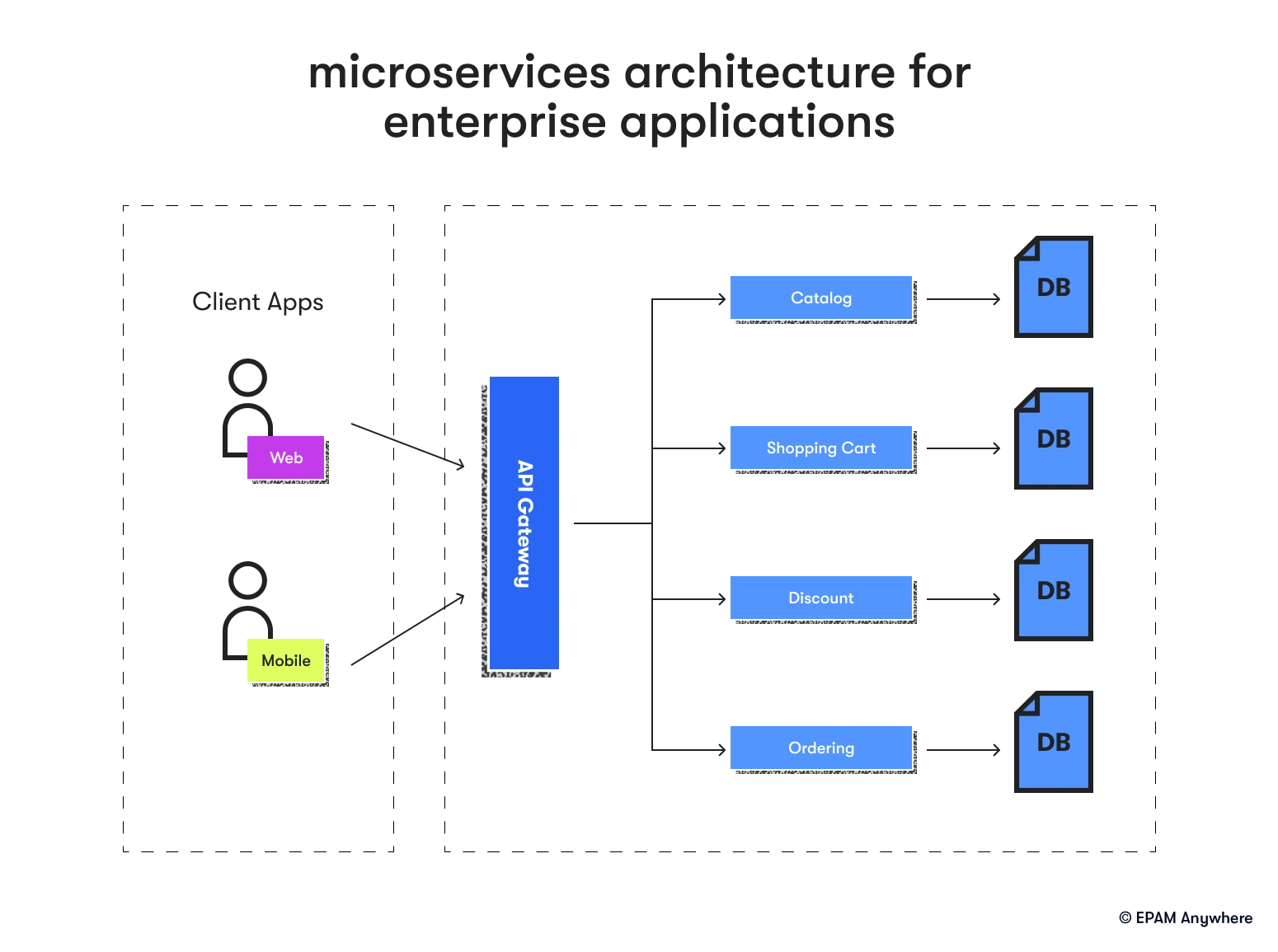
7. How do you ensure that a solution is secure and compliant with relevant regulations?
To ensure security and compliance, a solution architect should:
- Understand the applicable regulations and standards
- Incorporate security best practices and principles, such as the principle of least privilege and defense in depth
- Use secure coding practices and tools
- Implement regular security testing and monitoring
- Collaborate with security and compliance teams
8. What is the role of APIs in solution architecture?
APIs (Application Programming Interfaces) are crucial in solution architecture as they enable communication and integration between different components and services. They allow for modularity, extensibility, and interoperability, making building, maintaining, and scaling complex solutions easier.
9. How do you handle trade-offs between performance, cost, and complexity in a solution?
Handling trade-offs involves understanding the priorities and constraints of the project, analyzing the potential impact of different decisions, and making informed choices that balance the various factors. This may involve prototyping, benchmarking, and iterative refinement to find the optimal solution.
10. Can you describe a challenging project you've worked on as a solution architect and how you overcame the challenges?
This question allows you to showcase your problem-solving skills and experience in handling complex projects. Provide a brief overview of the project, the challenges you faced, and the strategies you used to overcome them.
11. What is your experience with cloud-based solutions and platforms?
Discuss your experience with various cloud platforms (e.g., AWS, Azure, Google Cloud) and the types of solutions you have designed and implemented using these platforms. Highlight any specific services or technologies you have used and how they contributed to the success of the project.
12. How do you stay up-to-date with the latest trends and technologies in solution architecture?
Mention the resources you use to stay informed, such as blogs, podcasts, conferences, and online courses. Also, discuss any personal projects or initiatives you have undertaken to learn and experiment with new technologies.
13. How do you collaborate with stakeholders and team members during the solution design process?
Explain your communication, collaboration, and decision-making approach, emphasizing the importance of understanding stakeholder needs, discovering the non-functional requirements with primarily product stakeholders, gathering feedback, and fostering a collaborative environment.
14. How do you handle data consistency and eventual consistency in a distributed system?
In a distributed system, ensuring data consistency can be challenging due to factors such as network latency, partitioning, and replication. To handle data consistency and eventual consistency, consider the following strategies:
- Choose the appropriate consistency model based on the system's requirements, such as strong, eventual, or causal consistency.
- Implement conflict resolution mechanisms, such as versioning, timestamps, or vector clocks, to resolve inconsistencies when they occur.
- Use distributed databases or data stores that support the desired consistency model and provide built-in mechanisms for handling data consistency.
- Monitor and measure the system's consistency levels to ensure they meet the desired requirements and make adjustments as needed.
15. Can you provide an example of a time when you had to adapt your solution design due to changing requirements or constraints?
This question allows you to demonstrate your flexibility and adaptability in the face of change. Describe the situation, the changes that occurred, and how you adjusted your solution design to accommodate them.
Next, let’s dive into our comprehensive list of senior solution architect interview questions and concise answers. Learn how to navigate the advanced inquiries that senior roles demand, showcasing your extensive expertise in architecture and design.
16. How do you define and measure the success of a solution architecture?
The success of a solution architecture can be measured by its ability to meet the business requirements, align with the organization's technology strategy, and provide a scalable, maintainable, and extensible foundation for future growth. Key performance indicators (KPIs) can be used to track the success of the architecture, such as system performance, user satisfaction, and return on investment.
17. How do you handle conflicting requirements or priorities from different stakeholders?
Handling conflicting requirements involves understanding the needs and priorities of each stakeholder, facilitating open communication and collaboration, and finding a balanced solution that addresses the most critical needs while considering the constraints and trade-offs.
18. Can you explain the concept of Infrastructure as Code (IaC) and its benefits?
Infrastructure as Code (IaC) is managing and provisioning infrastructure resources, such as networks, servers, and storage, using code and configuration files. The benefits of IaC include:
- Improved consistency and repeatability, as the infrastructure is defined in a version-controlled codebase.
- Faster and more reliable deployments, as the infrastructure can be provisioned and updated automatically using tools and scripts.
- Easier collaboration and sharing of infrastructure configurations among team members.
- Reduced risk of human error and manual configuration mistakes.
19. How do you approach the integration of legacy systems with modern technologies and platforms?
Integrating legacy systems with modern technologies requires a thorough understanding of the existing system, its limitations, and the desired outcomes. Strategies for integration may include API development, data migration, or the use of middleware and adapters. When integrating legacy systems, it's essential to consider the impact on performance, security, and maintainability.
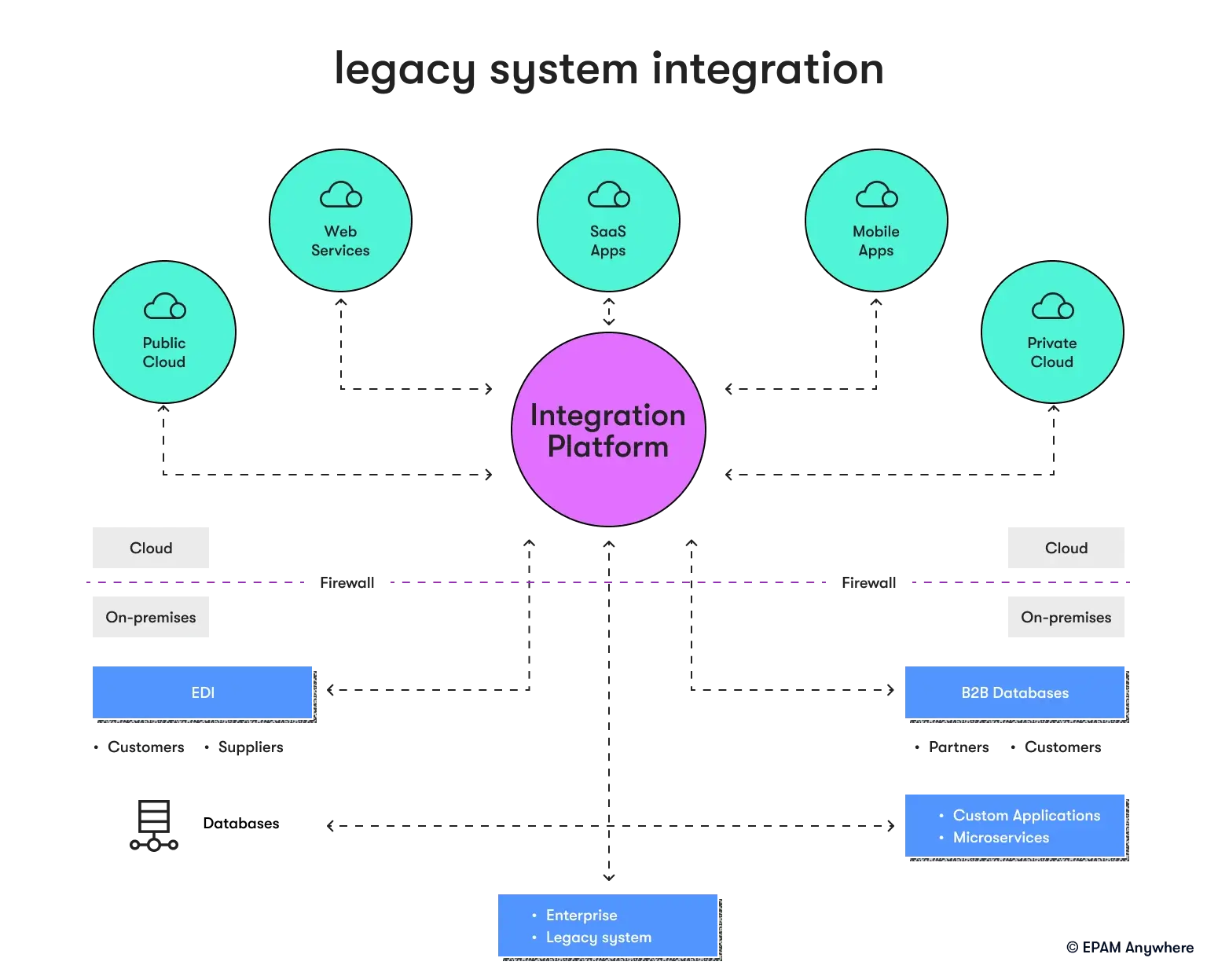
20. What is your experience with data architecture and big data technologies?
Discuss your experience with data architecture principles, such as data modeling, warehousing, and integration. Mention any specific big data technologies you have used, such as Hadoop, Spark, or NoSQL databases, and how they contributed to the success of your projects.
21. How do you ensure that a solution architecture is future-proof and can adapt to changing business needs?
To future-proof a solution architecture, consider the following strategies:
- Design for modularity and extensibility
- Choose technologies and platforms with a strong track record and community support
- Incorporate flexibility and adaptability into the design
- Plan for growth and change, including potential shifts in business requirements or technology trends
22. Can you provide an example of a time when you had to make a significant architectural decision with limited information or resources?
This question allows you to demonstrate your ability to make informed decisions under pressure. Describe the situation, the decision you made, and the rationale behind it. Also, discuss the outcome and any lessons learned from the experience.
23. How do you balance the need for innovation with the constraints of existing systems and infrastructure?
Balancing innovation with constraints involves understanding the organization's technology strategy, the capabilities and limitations of existing systems, and the potential risks and benefits of new technologies. It's essential to prioritize innovation that aligns with business goals and provides a clear return on investment while minimizing disruption and risk.
24. How do you ensure that a solution architecture meets the needs of diverse users, including those with different devices, network conditions, and cultural backgrounds?
To ensure that a solution architecture meets the needs of diverse users, consider the following strategies:
- Design for responsiveness and adaptability, ensuring that the solution works well on different devices, screen sizes, and orientations.
- Optimize for performance and resource usage, taking into account varying network conditions and bandwidth limitations.
- Incorporate localization and internationalization features, such as language translation, date and time formatting, and currency conversion, to support users from different cultural backgrounds.
- Test the solution with a diverse set of users, devices, and environments to identify and address any usability or accessibility issues.
- Provide customization and personalization options to accommodate individual user preferences and needs.
25. How do you approach capacity planning and performance optimization in a solution architecture?
Capacity planning and performance optimization involve analyzing the current and projected workloads, identifying potential bottlenecks and resource constraints, and implementing strategies to ensure the system can handle the expected load. This may include horizontal or vertical scaling, caching, load balancing, and performance tuning.
26. Can you explain the concept of event-driven architecture and mention its benefits and drawbacks?
Event-driven architecture (EDA) is a software design pattern where components communicate asynchronously through events, which are messages representing state changes or actions.
Benefits of EDA include:
- Decoupling: Components only need to know about events, not other components' internals.
- Scalability: Asynchronous processing allows for better scalability.
- Flexibility: It is easier to add, modify, or remove components without affecting the system.
- Real-time processing: It enables faster response times.
- Resilience: Components can continue processing events despite failures in other parts of the system.
Drawbacks of EDA include:
- Complexity: Managing the event flow in distributed systems can be challenging.
- Event consistency: Ensuring consistency across events and consumers can be difficult.
- Error handling: Handling errors in event chains can be complicated.
- Latency: Asynchronous processing can introduce latency in certain scenarios.
- Learning curve: Implementing EDA may require a shift in mindset and development practices.

27. How do you evaluate and select technologies and frameworks for a solution architecture?
Evaluating and selecting technologies and frameworks involves considering factors such as:
- Alignment with business requirements and technology strategy
- Maturity, stability, and community support
- Performance, scalability, and maintainability
- Integration with existing systems and infrastructure
- Cost and licensing considerations
How to prepare for technical interviews as a solution architect
As a solution architect, acing your technical interview is crucial to landing your dream job. With the right preparation, you can showcase your expertise, problem-solving skills, and ability to design innovative software solutions that align with business goals.
To help you put your best foot forward, we've compiled five essential tips for preparing for technical interviews as a solution architect. By following these guidelines, you'll be well-equipped to demonstrate your knowledge of architectural concepts, mastery of relevant technologies, and strong communication and collaboration skills, setting you apart from the competition and paving the way for a successful interview.
Tip 1: Master architectural concepts and patterns
As a solution architect, you'll need a deep understanding of various architectural patterns, such as microservices, event-driven, and service-oriented architectures. Review these concepts and be prepared to discuss their benefits, drawbacks, and use cases to demonstrate your expertise in designing scalable and maintainable solutions.
Tip 2: Familiarize yourself with relevant technologies and platforms
Solution architects work with various technologies, including cloud platforms, containerization, and API management tools. Research the technologies commonly used in your industry and the specific company you're interviewing with, and be prepared to discuss your experience and proficiency with these tools.
Tip 3: Prepare for scenario-based questions
Solution architects often face complex, real-world challenges that require creative problem-solving and decision-making. Practice answering scenario-based questions that involve designing solutions, handling trade-offs, and addressing non-functional requirements, such as performance, security, and scalability.
Tip 4: Showcase your communication and collaboration skills
A crucial aspect of a solution architect's role is effectively communicating with stakeholders and collaborating with cross-functional teams. Be prepared to discuss your approach to gathering requirements, presenting architectural designs, and working with developers, product managers, and other team members to ensure the successful implementation of your solutions.
Tip 5: Review your past projects and accomplishments
Reflect on your previous experience as a solution architect and be prepared to discuss specific projects, challenges, and successes. This will help you demonstrate your expertise, problem-solving abilities, and the value you can bring to the company. Additionally, consider any lessons learned and how they have influenced your approach to solution architecture.
Conclusion
In conclusion, mastering the art of solution architect interviews is essential for advancing your career in this dynamic and rewarding field. By thoroughly preparing for both common and senior-level interview questions, you'll be well-equipped to showcase your technical expertise, problem-solving abilities, and communication skills.
Remember to follow our tips on preparing for technical interviews as a solution architect to ensure you make a lasting impression on your potential employer. If you're ready to take the next step in your career, explore the exciting remote solution architect job opportunities at EPAM Anywhere. Apply now and join a global community of talented professionals working on cutting-edge projects and shaping the future of technology.

With a focus on remote lifestyle and career development, Gayane shares practical insight and career advice that informs and empowers tech talent to thrive in the world of remote work.
With a focus on remote lifestyle and career development, Gayane shares practical insight and career advice that informs and empowers tech talent to thrive in the world of remote work.
Explore our Editorial Policy to learn more about our standards for content creation.
read more



